
All categories
Featured selections
Trade Assurance
Buyer Central
Help Center
Get the app
Become a supplier

(4486 products available)













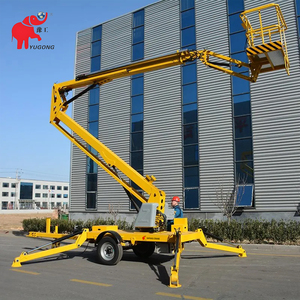
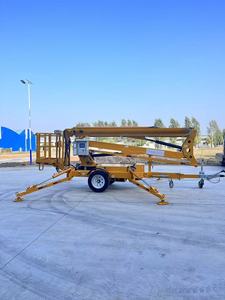



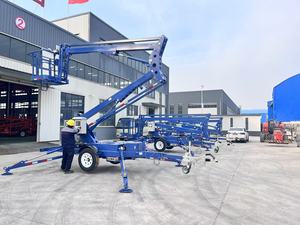



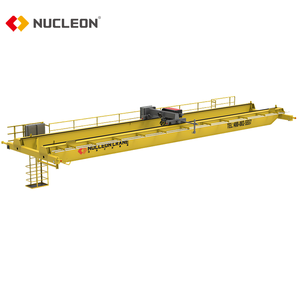








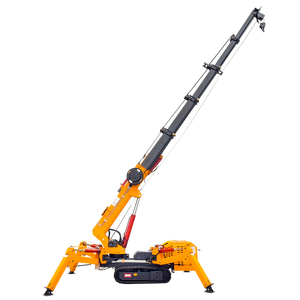
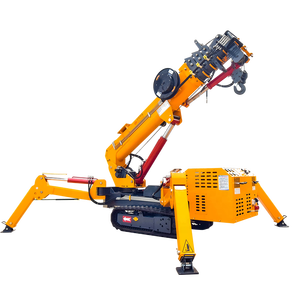


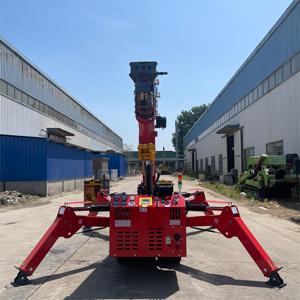





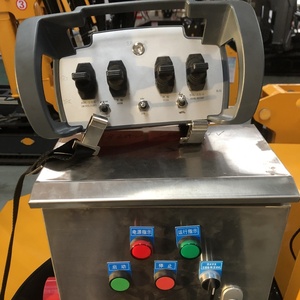



Despite their varied applications, robot cranes share a few design elements and features commonly used for automation and material handling. Primarily, different standardized rail configurations are usually adopted to allow the crane to move along a specific pathway. This may include a fixed rail, a suspended rail, or a jog rail. The choice of configuration is influenced by the design of the robot and the nature of the task at hand. For vertical movement, a standardized elevator system is employed to enable the robot to lift or lower items between different levels.
The governing system, which determines how the crane's movements are controlled, can be either open-loop or closed-loop. An open-loop system executes commands without feedback, while a closed-loop system relies on feedback for precise control. Mobility is a crucial factor for an effective robotic crane. 'Ground' is commonly referred to as the surface on which the robot operates. This factor directly influences how the robot moves about the intended spaces. Mobile robots can maneuver on various terrain types, including wheels, tracks, legs, or omnidirectional rollers.
As earlier mentioned, a robot crane comprises distinct modules or components, each responsible for performing a specific task in the material handling process. Together these parts create a seamless flow that enables efficient movement and control of goods. One of these key components is 'grippers', which are the end effectors responsible for holding, lifting, and releasing objects. 'Sensors and Vision' are another essential components for a robotic crane. The sensors typically provide data on temperature, pressure, and proximity, while vision systems may include cameras or laser scanning technology for object identification and recognition.
Robots rely on standardized programming languages and protocols to communicate. This includes rules and vocabulary used to give commands and instructions to the robot crane. As a robot cranes supplier one may want to consider a robot crane that supports commonly used programming languages and protocols for easier integration with existing systems.
Specifications for a crane robot vary widely based on its intended function, type, and design. Here are the general specifications one can expect:
Cranes need periodic maintenance. By following a maintenance plan, users can ensure safety, limit downtime, and extend their life. Here are a few tips:
The flexibility and efficiency of robot cranes make them applicable in various industries and scenarios. Here are some application scenarios of robot cranes.
Warehouse Automation
Robot cranes can be used for automated warehousing and storage systems. As an example, AS/RS (Automated Storage and Retrieval System) typically utilizes robot cranes to facilitate product storage, retrieval, and positioning. This helps to increase storage space utilization, improve productivity, and streamline operations.
Logistics and Distribution
In the logistics and distribution industry, robot cranes serve as an important component of sorting and conveying systems. They can be employed to sort, transfer, and stack goods and containers, thereby facilitating the automation of logistics sorting and distribution processes. As a result, it enhances operational efficiency and accuracy, as well as improves the quality of service.
Manufacturing and Production
In a variety of manufacturing and production tasks, such as assembly, welding, machining, and more, they may be used as material handling, assembly, or process-specific robots. These allow for the automation of production processes and the optimization of manufacturing workflows.
Flexible Manufacturing Systems
Robot cranes are capable of being integrated into a variety of manufacturing facilities, such as assembly lines and fabrication workshops, in order to achieve tasks like as material handling, product assembly, and equipment maintenance. Their adaptability allows for quick and easy reconfiguration to accommodate diverse manufacturing demands and schedules.
Cooperative Robotics
Robot cranes may be used as an important component in collaborative robotic systems together with other robot types (such as collaborative robots). They can help to build flexible production systems that are capable of adapting to a variety of production requirements and scenarios by facilitating human-robot cooperation and interaction.
These are only a few examples from a wide range of areas where robot cranes are utilized. Their flexibility and efficiency make them suitable for use in a variety of fields as well as a multitude of applications.
Industrial robotic cranes are special-purpose machines designed to lift and transport heavy loads. People should carefully consider the following factors when choosing these machines for their unique applications.
Weight capacity
This is the maximum weight a robot crane can carry. It comes in different values for different machines. A user should know the weight of the heaviest load they want to lift with the robot crane. Once they have this figure, they should select a crane with a weight capacity that is greater than the weight they calculated. Failing to do this may cause the robot crane to break down or get damaged while attempting to lift a heavy load.
Maximum reach
The reach of a robotic crane is the farthest horizontal distance it can extend from its base or mounting point. Users should choose the reach of the crane based on the configuration of their workspace and load requirements. The reach also depends on the arrangement of the loading points they want to service. Users should select a robot crane with a reach that allows them to access all the points they want to service smoothly.
Mobility and mounting options
A user should consider how they intend to install the robotic crane and the level of freedom needed to service the desired locations. For example, a mobile robot crane may be preferable to an air-mounted option if the user wants to service different points. Conversely, an aerial-mounted device may be better if the user wants to service points situated at an elevated height. The choice will also depend on the user's facility configuration and flow.
Payload and operational speed
These refer to the maximum weight a robot crane can handle and the speed at which it operates, respectively. A user should determine the weight of payloads they typically lift in their operations. After that, they should choose a crane that can handle the usual payload and operational speed to enhance productivity.
Controller and integration
A controller is a digital device that directs and controls the movements of a robotic crane. Users should determine the level of automation they need for their operations. After that, they should choose a robot crane whose controller is compatible with their existing automation systems. This ensures smooth integration and minimizes downtime during installation.
Q: How big is the robot crane market?
A: Fortune Business Insights valued the market size in 2022 at USD 8.55 billion and projected it to grow from USD 8.75 billion in 2023 to USD 18.91 billion by 2030.
Q: How do robot cranes move materials?
A: They use a combination of rail systems, wheels, and tracks to achieve the movement. The choice depends on the design of the robot crane and its intended application. Robot cranes also use remote control, pre-programmed actions, or artificial intelligence to automate the movement of materials.
Q: Can a robot crane perform multiple tasks?
A: Yes, it can be designed to perform multiple tasks, such as loading, unloading, and sorting, thereby reducing operational costs and increasing efficiency.
Q: What are the trends in the robot crane industry?
A: Collaborating robots (cobots) are working alongside human operators. There is a growing trend toward customization to meet specific operational needs. Integration with the Internet of Things (IoT), artificial intelligence (AI), and machine learning for smarter automation is increasing. The focus on sustainable operations is prompting a shift away from energy-intensive machines to automated robotic systems.